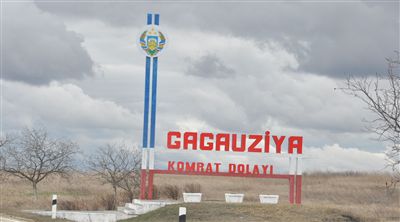A six-way split is popular not only among Silicon Valley dreamers who (
as discussed yesterday in this blog) would like to partition their state. It is also the magic number that the government of
Yemen is banking on as it decides how to allocate power to the regions in a way that will mollify those who want to split the country up for good.
 |
Yemen’s president Abd-Rabbu Mansour Hadi.
Hm, this doesn’t look quite like a rally for an interim president. |
On February 9th, the caretaker interim president of the
Republic of Yemen,
Abd-Rabbu Mansour Hadi,
announced a plan to divide the formerly partitioned Arab country into six autonomous regions—two making up what used to be the
People’s Democratic Republic of Yemen (a.k.a.
South Yemen) and four making up the smaller, more mountainous
Arab Republic of Yemen. The country will, under the new Constitution if implemented, be called the
Federal Republic of Yemen. The two were pawns of opposite sides in the Cold War until the abrupt end of Soviet communism in 1990 brought about reunification. But the old border mapped tribal and sectarian loyalties as well, and since then there has been an insurgency seeking to revive an independent South Yemen. Things had calmed down somewhat after a failed Southern secessionist revolt in 1994, but the Arab Spring revolutions which started in 2011 turfed Yemen’s autocratic ruler,
Ali Abdullah Saleh, out of office the following year, and since then the
Southern Separatist Movement, also called
al-Hirak, has been fighting tooth and nail to split away.
 |
| The partition until 1990 |
Like much else in the Arab Spring, the violence is often sectarian in basis, with Shiites more dominant in the old North Yemen and Sunnis more dominant in the South. This has given the northern-dominated government the opportunity to cast Southern secessionism as Wahhabist and Islamist in origin, and indeed
Ansar al-Shari’a, also known as
al-Qaeda in the Arabian Peninsula (
A.Q.A.P.) operates mostly in Yemen, and mostly in the south (but increasingly in the north). But al-Hirak are hardly radical Islamists; they command wide and deep loyalty in the former South Yemen.
But it is not just Southerners who want to split away. The
Houthi minority in the mountainous north of the country, along the border with Saudi Arabia, also have militias and also control territory. The Houthis are the group that ruled North Yemen when it was the
Mutawakelite Kingdom of Yemen, an Arab Revolt successor to the
Ottoman Empire. The Mutawakelites were turfed out of power in an Egyptian-led
coup d’état in 1962 in a wave of movements that brought Nasserists, Ba’athists and other Arab nationalists to power in the wake of the Suez Canal crisis.
 |
| Apparently some Yemenis wouldn’t mind too much if the South seceded. |
To look at the new map of territories unveiled this week (see map at the top of this article), the Yemeni regime seems more worried about the Houthi insurgency, which is closer to the capital, Sana’a, than the Southern one. The four current Yemeni provinces where Houthis have the strongest presence—
’Amran,
al-Jawf,
Hajjah, and their heartland,
Sa’ada—are allocated among three different regions in the new plan:
Tahman,
Azal, and
Sheba. The former South Yemen, on the other hand, would become two large regions,
Aden, around their eponymous former capital, and
Hadramaut.
 |
| The situation in Yemen early on in the Arab Spring, when the current conflict began ... |
Indeed, Houthis
have made great gains recently. It was reported recently that scores were killed in fighting in the northern mountains as Houthis have been disloding rival tribes from their lands. Houthis now the core territory of the Hashid tribe, in Amran province. The deposed dictator, Saleh, was a Hashid.
In some ways, the plan seems to be an attempt to hand a large degree of united autonomy to the South, mainly to try to bring the major Southern secessionist players back to the negotiating table. Most Southern leaders withdrew from the negotiations for the new Constitution late last year. The
United States has been working quietly behind the scenes to help ensure the South does not split away, though the semi-secret American drone-aircraft war on A.Q.A.P. has not so far been extended to al-Hirak. As far as the West is concerned, two Yemens would mean double the chance that one of them—most likely the South—would fall under the sway of al-Qaeda. We have already seen the disastrous effects of al-Qaeda-linked groups piggybacking their cause onto separatist movements in northern
Mali and southern
Somalia. Northern
Nigeria’s Islamist insurgency could be put in this category as well. Al-Qaeda also takes advantage of power vacuums in secessionist regions like eastern
Libya and
Syria’s
Kurdistan region. And, indeed, in 2011 and 2012, Ansar al-Shari’a established two towns,
Jaar and
Zinjibar, as sovereign Islamist enclaves (Jaar was the “
Emirate of Waqar”); those were shut down by the Yemeni military (
as reported at the time in this blog), but al-Qaeda will try again if they can. After all, makeshift city-states is the new al-Qaeda strategy
in both Syria (Azaz) and
Iraq (Fallujah).
 |
| The Emirate of Waqar was short-lived. |
President Hadi is now in the unenviable position of proposing a plan to end the violence which does not even have the backing of the major insurgent group in the country. (At least the Houthis were at the table, but al-Qaeda certainly isn’t—and Houthi rebels naturally reject the six-region proposal.) Part of the new plan is that after five years the borders and divisions can be reexamined and, possibly, renegotiated. But that is not necessarily welcome news to Southerners who want independence now. If nothing else, this means the Southern insurgency will not end any time soon, and may even intensify.
 |
| Southern separatists with their flag |
































